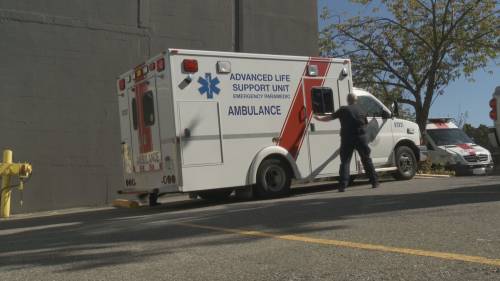In the predawn darkness, when most British Columbians are still asleep, paramedic Sarah Jennings prepares for another 12-hour shift. What was once a calling has become, for many like her, an endurance test that extends far beyond the physical demands of the job. Behind the sirens and uniforms, a silent crisis is unfolding among British Columbia’s first responders.
“Some days I sit in my car before my shift and just try to breathe,” confesses Jennings, a 15-year veteran paramedic in Vancouver. “The things we see, the lives we try to save, the losses we carry—it all accumulates in ways the public rarely sees.”
Recent data from the Ambulance Paramedics of British Columbia reveals a troubling trend: mental health-related leaves among paramedics have increased by 37% over the past three years. This surge comes as the province grapples with staffing shortages, leaving remaining crews to shoulder heavier burdens with fewer resources.
Troy Clifford, president of the Ambulance Paramedics of British Columbia, points to systemic issues underlying this crisis. “We’re seeing unprecedented levels of burnout and PTSD among our members,” Clifford explained during a press conference in Victoria. “When paramedics respond to six or seven overdose calls in a single shift, or repeatedly face traumatic scenes without adequate time to process, the psychological impact is profound.”
The problem extends beyond urban centers. In rural communities across B.C., paramedics often work in isolation, covering vast geographic areas with minimal backup. For these professionals, the weight of being the sole medical responder can be particularly devastating to mental wellbeing.
The provincial health authority has implemented several support programs, including a peer support network and expedited access to psychological services. However, many frontline workers report these resources remain insufficient against the tide of accumulating trauma.
“We’ve increased psychological support services by 25% this year alone,” notes Health Minister Adrian Dix, “but we recognize more structural changes are needed to address the root causes of distress among our first responders.”
Mental health experts emphasize that the nature of paramedic work creates unique vulnerabilities. Dr. Patricia Landsman, a specialist in first responder trauma at the University of British Columbia, explains: “Paramedics experience what we call ‘cumulative trauma’—the layering of stressful events without adequate recovery time. This differs significantly from single-incident trauma and requires specialized intervention approaches.”
The financial implications of this crisis are substantial. WorkSafeBC reports that mental health claims from paramedics have cost the system over $18 million in the past year alone, representing a 43% increase from five years ago. These figures highlight both the human and economic toll of failing to address the psychological wellbeing of emergency personnel.
Some jurisdictions have begun implementing innovative solutions. In Victoria, a pilot program introducing mandatory “decompression periods” after particularly traumatic calls has shown promising results, with participating paramedics reporting improved resilience and job satisfaction. Meanwhile, in Kelowna, integrated teams of mental health professionals now regularly ride along with ambulance crews during peak periods, providing immediate support following difficult calls.
For paramedic Michael Chen, who nearly left the profession after 12 years due to burnout, such initiatives represent a vital lifeline. “Having someone who understands the unique stressors we face, right there in the moment—it makes all the difference,” he says. “We need to normalize mental health care as part of our regular routine, not something we seek only when we’re already breaking.”
As British Columbia continues to face intersecting public health crises—from the ongoing opioid emergency to increasing demands from an aging population—the psychological wellbeing of those on the frontlines has never been more critical to the province’s healthcare infrastructure.
The question now facing policymakers, health authorities, and citizens alike is whether we can transform our understanding of emergency care to protect those who protect us: Can we build a system that saves lives without sacrificing those who dedicate their lives to saving others?























